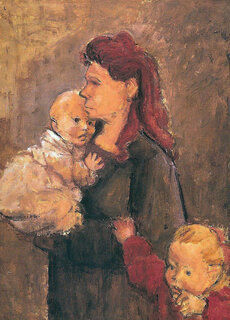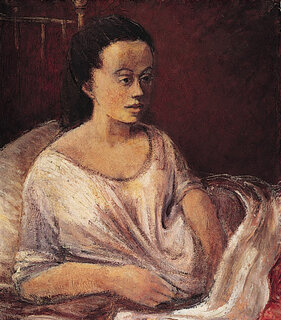
© Josef Herman estate
Josef Herman discovered his mature artistic voice when first visiting the Welsh village of Ystradgynlais in the summer of 1944. There he experienced a key moment of recognition when he saw a group of miners returning from work briefly outlined on a bridge against a copper-coloured sky. That image stayed with him and provided a subject. For the next eleven years Herman lived in Ystradgynlais and painted and drew the miners. He was swiftly accepted into the community and nicknamed Joe Bach, and the work he subsequently produced made his name as a distinct artistic force in Britain. Herman did not paint the miners at work in the pit - as Henry Moore had done - but captured them in the canteen or walking home, exhausted after their labours. More often than not, they are anonymous, and represent the universal rather than the particular: they stand for the dignity of labour.




